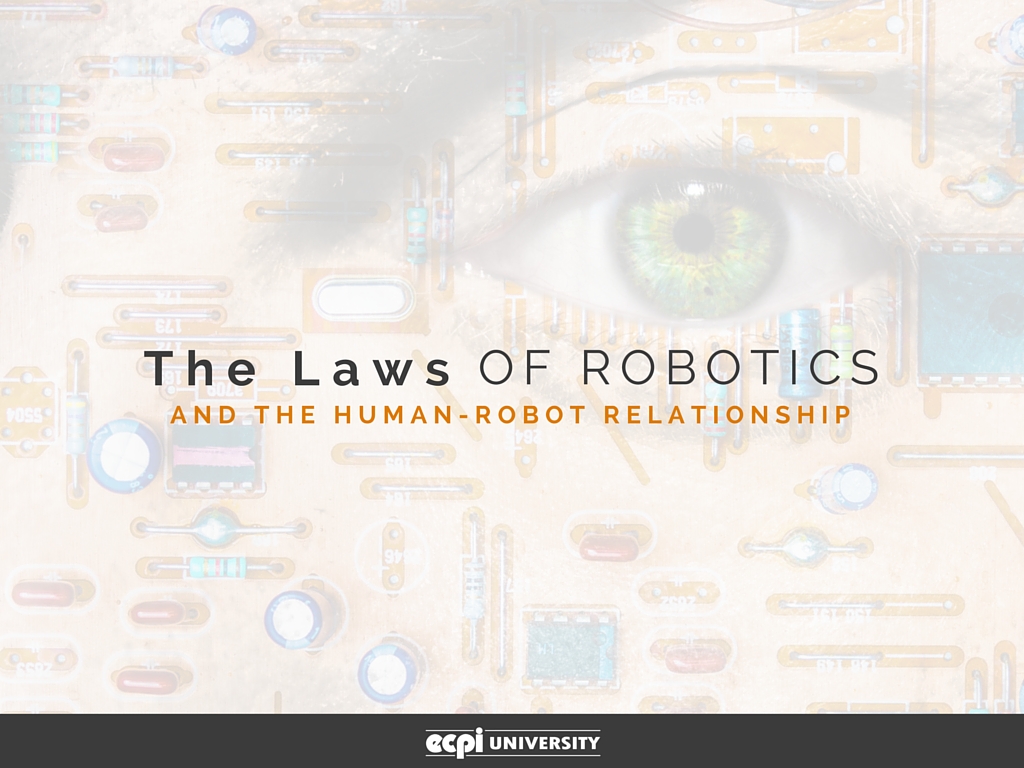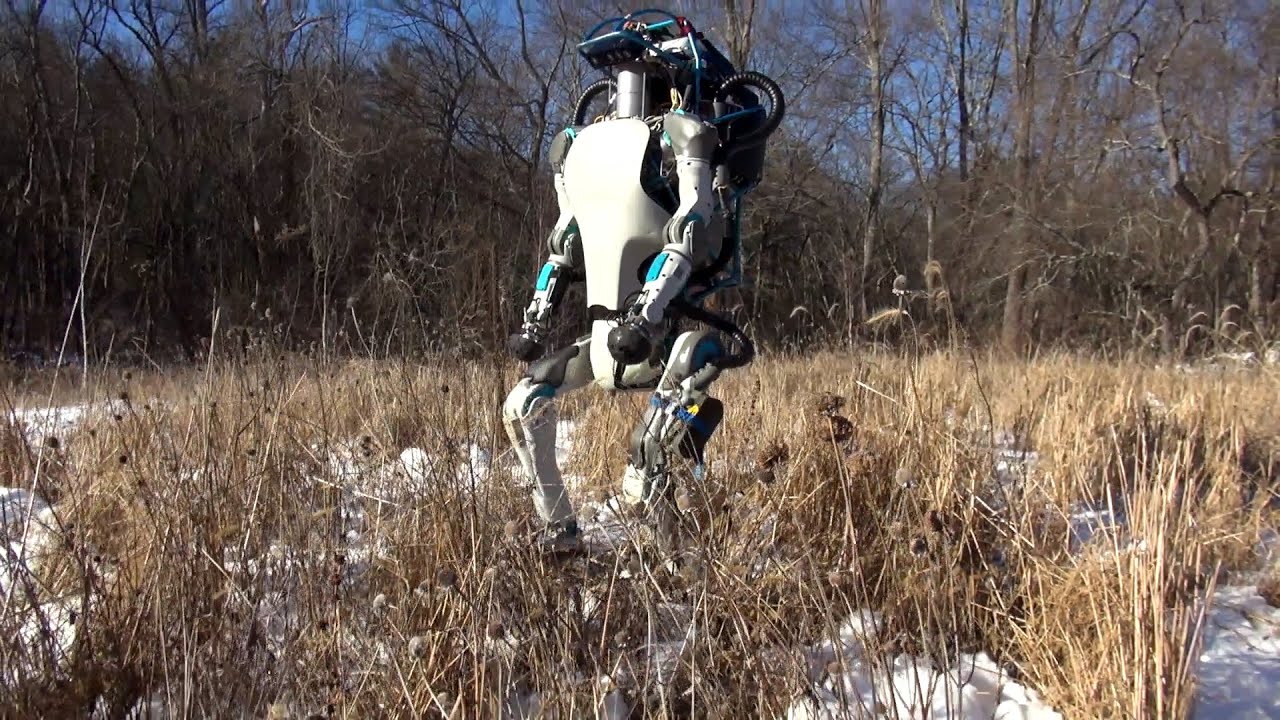
You may be familiar with Boston Dynamics’ line of videos celebrating their robots. The videos instantly create sentimental lumps in your throat or cold fear in your eyes, depending on your attitude toward robots. You may be less familiar with the parody video; Atlas robot swears and threatens “Kevin” with arson in retaliation for being mistreated by Atlas’s human workmate. Atlas and “Kevin” need to brush up on their human-robot relationships, and a quick review of the laws of robotic engineering wouldn’t hurt, either.
Laws of Robotics
 Many different bodies have created laws of robotics. Isaac Asimov created three for his science-fictional Foundation Trilogy:
Many different bodies have created laws of robotics. Isaac Asimov created three for his science-fictional Foundation Trilogy:
- A robot may not injure a human being or, through inaction, allow a human being to come to harm.
- A robot must obey orders given it by human beings except where such orders would conflict with the First Law.
- A robot must protect its own existence as long as such protection does not conflict with the First or Second Law.
These are excellent plot devices, but are useless in the practical world. Before you get upset, consider: how can any robot know all the countless ways humans can be harmed? We humans apparently seek new ways every Saturday night, and if you don’t believe that, visit a busy Emergency Room next weekend.
EPSRC
The Engineering and Physical Sciences Research Council (EPSRC) produced Five Ethical Rules for Robots, a sort of Semi-Ten Commandments minus the stone and Charlton Heston:
- Robots are multi-use tools. Robots should not be designed solely or primarily to kill or harm humans, except in the interests of national security.
- Humans, not robots, are responsible agents. Robots should be designed; operated as far as is practicable to comply with existing laws & fundamental rights & freedoms, including privacy.
- Robots are products. They should be designed using processes which assure their safety and security.
- Robots are manufactured artifacts. They should not be designed in a deceptive way to exploit vulnerable users; instead their machine nature should be transparent.
- The person with legal responsibility for a robot should be attributed.
These simple and direct statements eliminate nearly all villains populating science-fiction movies. Designers and builders of practical robots (such as Boston Dynamics) who conscientiously follow these principles cannot build time-traveling cyborgs disguised as humans to kill off the mother of their future enemy, for example (sorry, Terminator).
Can’t We All Just Get Along?
Anyone watching Boston Dynamics’ videos in which they purposely mistreat their own creations feels instant sympathy across the uncanny valley for the little struggling machines. This gets to the—pardon the word—heart of what makes us human: we feel compassion for these anthropomorphized clanking machines. Why would their creators turn on them to purposely knock them over? Why ask them to pick up boxes and then knock the boxes out of their puny mechanical arms?
Human-robot relationships are complex. Are we their parents, coworkers, or obedient slaves? Are they just machines, artificially intelligent and capable of learning, or our benevolent overlords?
Anyone pursuing a career in robotics, mechatronics and electrical engineering cannot afford to ignore the ethical dilemmas elicited by a 21st century that brings promise and potential panic from our own creations.
A mechatronics technician must have a sense of humanity, and understand the wide range of reactions robots can produce in people:
- Can this machine take my job?
- What would happen to me if I deliberately knocked down this robot?
- What safeguards protect me from this moving machine?
- Can this machine harm me, or my child?
Since the dawn of the industrial revolution workers have been sabotaging machinery, including robots. Psychology courses are instrumental in helping the science-minded mechatronics technician understand human motivations. The widening field of mechatronics needs more thoughtful, broadly educated technicians.
Salary in Robotics Engineering: Statistics Say…
The Bureau of Labor Statistics (BLS) tells us that an electro-mechanical technician, which is a sort of steam-punk way to describe those in the mechatronics field, earned a median annual wage of $53,070 as of May, 2014. Tickling the numbers out (tickling is something robots cannot enjoy, by the way) for the same period, we learn:
- Electro-mechanical technicians working in engineering services earned median annual wages of $56,800
- Mechatronics workers in machinery manufacturing earned median annual wages of $57,130
- Washington state mechatronics technicians earned median annual wages of $80,700
Learn the Laws of Robotics Engineering
Educating the public and a company’s workers as to the limits of robots can certainly improve human-robot relationships. Getting educated as a well-rounded mechatronics technician can begin at ECPI University, where you could earn a Bachelor of Science Degree in Electronics Engineering Technology with a concentration in Mechatronics. If you’re looking at robotics engineering colleges, contact ECPI today to find out how you can learn the laws of robotic engineering, improve your relationship with the robots you care about most, and find a way to prevent harm to either Atlas or “Kevin.” It could be the Best Decision You Ever Make!
Supporting STEM initiatives at the FIRST Robotics Tournament. #futureisbright #ECPI pic.twitter.com/MeiZBB37
— Nina (@ninadane) March 16, 2012
DISCLAIMER – ECPI University makes no claim, warranty, or guarantee as to actual employability or earning potential to current, past or future students or graduates of any educational program we offer. The ECPI University website is published for informational purposes only. Every effort is made to ensure the accuracy of information contained on the ECPI.edu domain; however, no warranty of accuracy is made. No contractual rights, either expressed or implied, are created by its content.
Gainful Employment Information – Mechatronics - Bachelor’s
For more information about ECPI University or any of our programs click here: http://www.ecpi.edu/ or http://ow.ly/Ca1ya.



